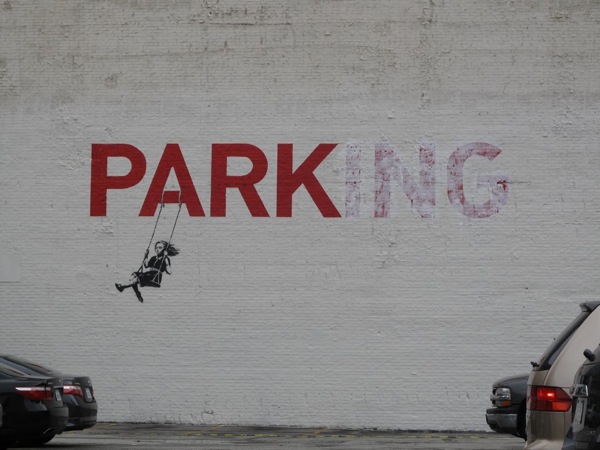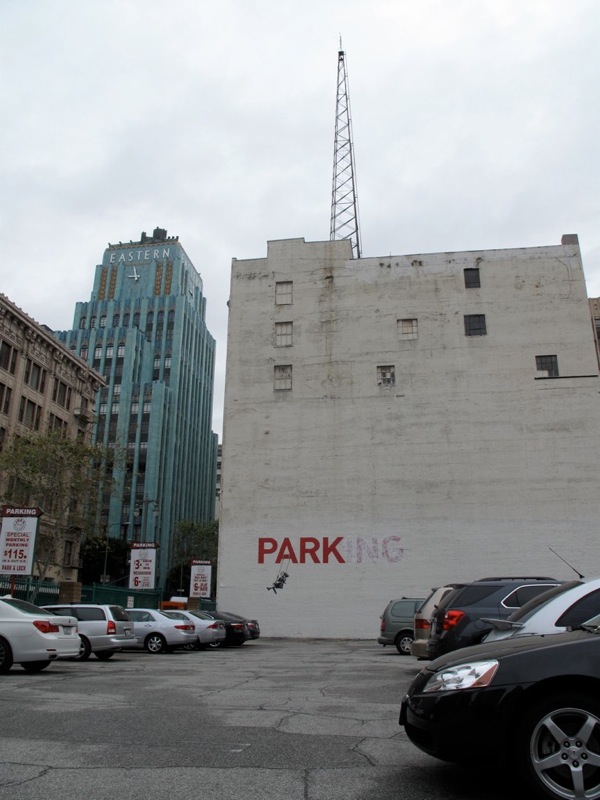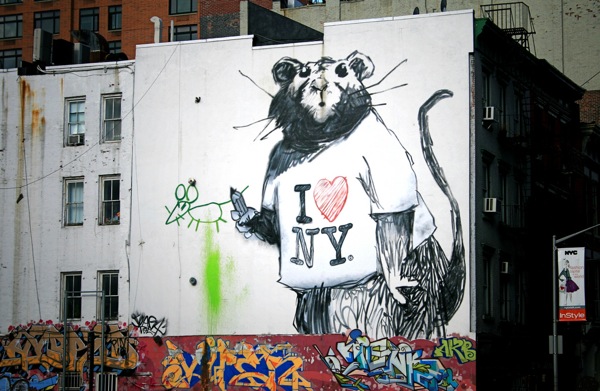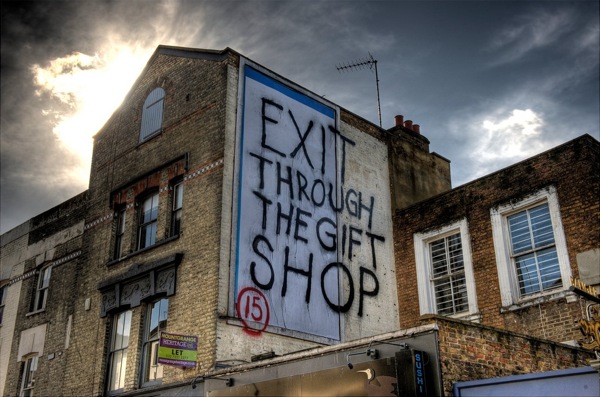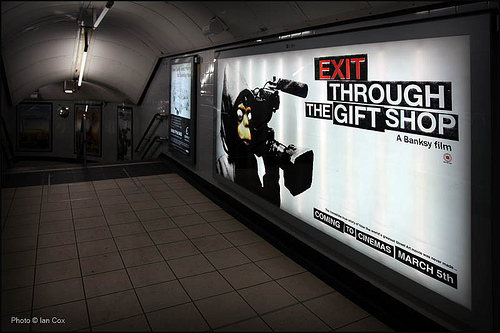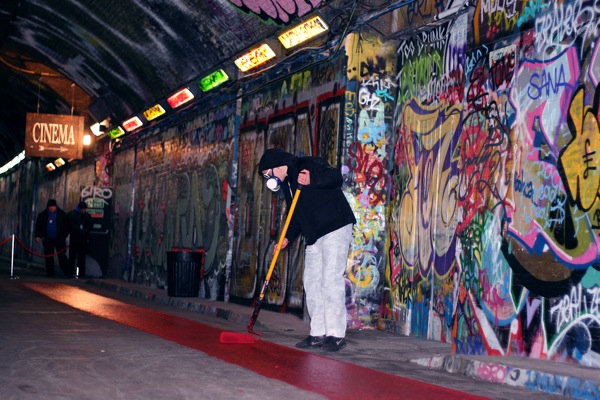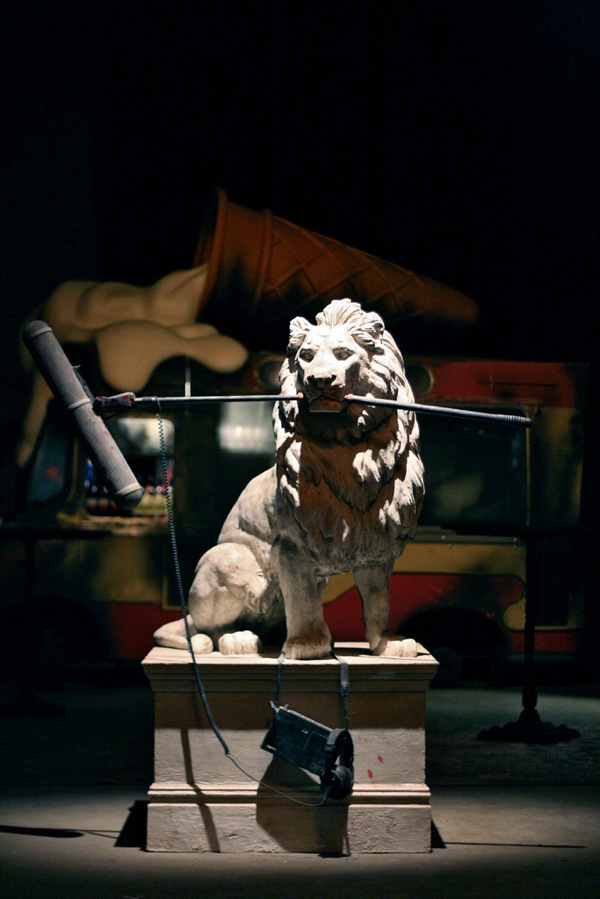Note from RJ: The following post by Alison Young was originally published on her blog, Images to Live By. We at Vandalog would like to thank Alison for kindly allowing us to republish it here, along with part II of the review (coming tomorrow).
I’m in New York City right now, and last night I attended a preview screening of Banksy’s film, Exit Through the Gift Shop. The film is being released in a number of US cities from April 16th and if you click here you can find a list of release dates, cities and theaters. (If you’re reading this in Britain, the film’s been out for a few weeks; if you’re reading this in Australia, be patient a little longer because the film will be released there in early June.)
Given the intense interest in Banksy as an artist and in the mystery of his identity, it’s inevitable that this film will attract a lot of attention. What’s as interesting as the movie itself is the range of responses that people are having to the film. Among those who’ve seen it so far, people speak positively of the film (as they should, since it’s a highly enjoyable documentary), but they also seem, first of all, surprised that it is more about Mr Brainwash (aka MBW aka Thierry Guetta) than it is about Banksy; and, second, disappointed that, because the film is more about Mr Brainwash, Banksy doesn’t reveal much of himself in the movie.
Let’s start with the first of those reactions, that the film’s not ‘about’ Banksy, which certainly raises the question of what the film is about. Well, the film operates on many different levels, and one of its main ones is the story of how street art took off, from being something with an intense local significance which was shared through the networks of the global street art community for the enjoyment of those who practice or appreciate street art, to became an entrenched part of the mainstream art world, whereby paintings (and artists) are commodified for profit.
To tell that story, the film focuses on Thierry Guetta’s transformation from amateur film-maker into artworld succes du jour, as a means of demonstrating both the possibilities open to anyone with the will to put up art and the (slightly frightening) logical consequences of those possibilities (for example, having people queueing for hours to get into your art show, simply because they’ve been told by the media that your art is important).
The film treads a clever and careful line between condoning and critiquing the commercialization of street art, as its embodied in Guetta’s transformation: it really is left up to the viewer to work out where you stand on the issue. In some ways, the film seems to be criticizing the people who have bought Mr Brainwash’s work for vast sums of money and who have contributed to his art world stardom, but, then again, isn’t this the same art world that has made stars of Shepard Fairey and Banksy and Blek le Rat? If we want to critique the art world, it must be a critique that can specify why Mr Brainwash’s stardom is problematic when that of the others is not.
So: how do we think through that problem? Is it because Mr Brainwash doesn’t make all of his art himself? Neither does Shepard Fairey nowadays, nor Banksy (both of whom have assistants – and we see some of Banksy’s assistants at work in the film), and neither does Jeff Koons, for that matter. Is it because Mr Brainwash’s work is derivative (his work repeats many of the devices used by Andy Warhol, Banksy, Fairey, Nick Walker, Blek…)? Well, that might be a better founded criticism, but it still requires us to think through its implications: each of those artists borrow from other artists and art movements, re-presenting certain tropes in order to create a new art idiom. Perhaps Mr Brainwash’s endless borrowing (what some would even call plagiarism) from the borrowers lacks aesthetic merit because it does nothing new – no new idiom emerges from his pillaging of pop culture and street art.
At any rate, I think these issues form the heart of what the film is about – and I’d back this up by referring you to the movie’s title. By calling his film ‘Exit Through the Gift Shop‘, Banksy is both having a sly dig at museum culture, which often cynically seeks to extract more money from visitors after they have viewed an exhibit, but he is also pointing out to us the direction that street art may be heading in, now that its commercialization is so advanced – the only ‘exit’ is to find a way through the endless consumption offered to us as a poor substitute for the art itself.

